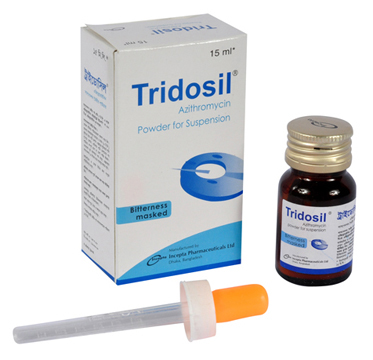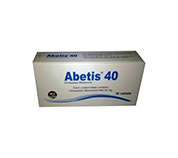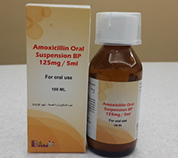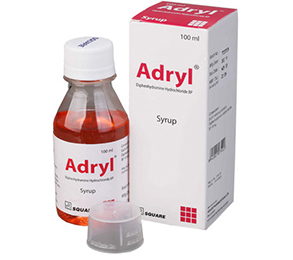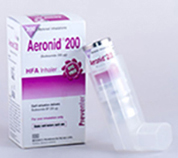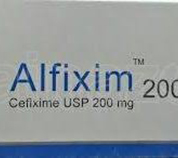Tridosil 15 ml Pfs 1 Pcs
Price:
85 ৳
Generic Name:
Type:
Quantity:
Alternative products
Share:
Indications
Azithromycin is indicated for infections (caused by susceptible organisms) in lower respiratory tract infections including bronchitis and pneumonia, in upper respiratory tract infections including sinusitis and pharyngitis/tonsillitis, in otitis media, and in skin and soft tissue infections. In sexually transmitted diseases in men and women, Azithromycin is indicated in the treatment of non-gonococcal urethritis and cervicitis due to Chlamydia trachomatis.
* চিকিৎসকের পরামর্শ অনুযায়ী ঔষধ সেবন করুন
Therapeutic Class
Macrolides
Pharmacology
Azithromycin is an azalide antibiotic, subclass of the macrolide class of antibiotics. Azithromycin acts by binding to the 50s ribosomal subunit of susceptible organisms and thus interferes with microbial protein synthesis.
Azithromycin demonstrated activity in vitro, against a wide range of gram-positive and gram-negative bacteria including: Staphylococcus aureus, Streptococcus pneumoniae, Streptococcus pyogenes (Group A) and other Streptococcal species; Haemophilus influenzae and parainfluenzae; Moraxella catarrhalis; anaerobes including Bacteroides fragilis, Escherichia coli, Bordetella pertussis, Bordetella parapertussis, Borrelia burgdorferi, Haemophilus ducreyi, Neisseria gonorrhoeae and Chlamydia trachomatis. Azithromycin also demonstrates activity in vitro against Legionella pneumophila, Mycoplasma pneumoniae and hominis; Campylobacter sp., Toxoplasma gondii and Treponema pallidum.
Azithromycin demonstrated activity in vitro, against a wide range of gram-positive and gram-negative bacteria including: Staphylococcus aureus, Streptococcus pneumoniae, Streptococcus pyogenes (Group A) and other Streptococcal species; Haemophilus influenzae and parainfluenzae; Moraxella catarrhalis; anaerobes including Bacteroides fragilis, Escherichia coli, Bordetella pertussis, Bordetella parapertussis, Borrelia burgdorferi, Haemophilus ducreyi, Neisseria gonorrhoeae and Chlamydia trachomatis. Azithromycin also demonstrates activity in vitro against Legionella pneumophila, Mycoplasma pneumoniae and hominis; Campylobacter sp., Toxoplasma gondii and Treponema pallidum.
Dosage
Oral or Injection:
Adults or elderly:- For lower respiratory tract infections including bronchitis and pneumonia, upper respiratory tract infections including sinusitis and pharyngitis / tonsillitis, otitis media and skin and soft tissue infections: The total dose of Azithromycin is 1.5 gm given as 500 mg once daily for 3 days. An alternative to this dosage schedule is that 500 mg once daily on day 1, followed by 250 mg once daily for next 4 days.
- For sexually transmitted diseases caused by Chlamydia trachomatis: The dose of Azithromycin is 1 gm given as a single dose. Alternatively, 500 mg once daily on day 1, followed by 250 mg once daily for next 2 days may also be given.
- 5-10 kg (6 months-2 years): 1.25 ml - 2.5 ml (¼ - ½ tsp) Once daily for three days
- 11-20 kg (3-8 years): 5 ml (1 tsp) Once daily for three days
- 21-30 kg (9-12 years): 7.5 ml (1 ½ tsp) Once daily for three days
- 31-40 kg (13-15 years): 10 ml (2 tsp) Once daily for three days
- 41-45 years (16-17 years): 11.5 ml (2 ½ tsp) Once daily for three days
Ophthalmic-
Bacterial conjunctivitis:- Adult: Instill 1 drop in the affected eye(s) twice daily, eight to twelve hours apart for the first two days and then instill 1 drop in the affected eye(s) once daily for the next five days.
- Pediatric Use: The safety and effectiveness of Azithromycin solution in pediatric patients below 1 year of age have not been established. The efficacy of Azithromycin in treating bacterial conjunctivitis in pediatric patients one year or older has been demonstrated in controlled clinical trials
- Geriatric Use: No overall differences in safety or effectiveness have been observed between elderly and younger patients.
* চিকিৎসকের পরামর্শ অনুযায়ী ঔষধ সেবন করুন
Administration
Azithromycin can be taken with or without food.
* চিকিৎসকের পরামর্শ অনুযায়ী ঔষধ সেবন করুন
Interaction
Antacids: Peak serum levels but not the total extent of absorption are reduced by aluminium and magnesium containing antacids in the stomach. Azithromycin should therefore be taken at least 1 hour before or 2 hours after taking these antacids.
Ergot Derivatives: Because of the theoretical possibility of ergotism, concomitant administration of ergot derivatives and Azithromycin should be avoided. Digoxin & Cyclosporin: Macrolides have been known to increase the plasma concentration of Digoxin & Cyclosporin and so caution should be exercised while co-administration is necessary. Anti-
Histamines: A potentially life threatening interaction between erythromycin and terfenadine or astemizole have been reported. Although such an interaction with Azithromycin is not established yet, it is wise to avoid concomitant use of Azithromycin and terfenadine or astemizole.
Ergot Derivatives: Because of the theoretical possibility of ergotism, concomitant administration of ergot derivatives and Azithromycin should be avoided. Digoxin & Cyclosporin: Macrolides have been known to increase the plasma concentration of Digoxin & Cyclosporin and so caution should be exercised while co-administration is necessary. Anti-
Histamines: A potentially life threatening interaction between erythromycin and terfenadine or astemizole have been reported. Although such an interaction with Azithromycin is not established yet, it is wise to avoid concomitant use of Azithromycin and terfenadine or astemizole.
Contraindications
Azithromycin is contraindicated in patients hypersensitive to Azithromycin or any other macrolide antibiotic. Co-administration of ergot derivatives and Azithromycin is contraindicated. Azithromycin is contraindicated in patients with hepatic diseases.
Side Effects
Azithromycin is well tolerated with a low incidence of side effects. The side effects include nausea, vomiting, abdominal discomfort (pain/cramps), flatulence, diarrhoea, headache, dizziness, and skin rashes and are reversible upon discontinuation of therapy.
Pregnancy & Lactation
Recent clinical studies have recommended that Azithromycin should be considered for the initial treatment of chlamydial cervicitis in pregnancy. In other infections. Azithromycin should be used only when clearly needed. It is not known whether Azithromycin is excreted in breast milk. Exercise caution when administering to a nursing woman.
Precautions
As with any antibiotic, observation for signs of superinfection with non-susceptible organisms, including fungi, is recommended. No dose adjustment is needed in patients with renal impairment.
Overdose Effects
There is no data on overdosage with Azithromycin. Typical symptoms of overdosage with macrolide antibiotics include hearing loss, severe nausea, vomiting and diarrhoea. Gastric lavage and general supportive measures are indicated.
Use in Special Population
Pediatric Use: Azithromycin oral dosage forms can be administered to pediatric patients from 6 months of age. Safety and effectiveness of azithromycin for injection in children or adolescents under 16 years have not been established.
Reconstitutions
To reconstitute Azithromycin 15 ml powder for suspension: Add 10 ml or 2 tea spoonfuls of just boiled and cooled water to the content of the bottle and shake well to mix uniformly.
To reconstitute Azithromycin 30 ml powder for suspension: Add 20 ml or 4 tea spoonfuls of just boiled and cooled water to the content of the bottle and shake well to mix uniformly.
To reconstitute Azithromycin 50 ml powder for suspension: Add 35 ml or 7 tea spoonfuls of just boiled and cooled water to the content of the bottle and shake well to mix uniformly.
To reconstitute Azithromycin 30 ml powder for suspension: Add 20 ml or 4 tea spoonfuls of just boiled and cooled water to the content of the bottle and shake well to mix uniformly.
To reconstitute Azithromycin 50 ml powder for suspension: Add 35 ml or 7 tea spoonfuls of just boiled and cooled water to the content of the bottle and shake well to mix uniformly.
Storage Conditions
Azithromycin IV infusion: When diluted according to the instructions, azithromycin for injection is stable for 24 hours at or below room temperature 30° C, or for 7 days if stored under refrigeration 5° C.
Azithromycin capsule, tablet and dry powder for suspension: should be stored at room temperature (below 30° C). Any unused portion of reconstituted Azithromycin suspension should be discarded after 5 days.
Azithromycin eye drops: Store unopened bottle under refrigeration at 2°C to 8°C. Once the bottle is opened, store at 2°C to 25°C for up to 14 days. Discard after the 14 days.
Azithromycin capsule, tablet and dry powder for suspension: should be stored at room temperature (below 30° C). Any unused portion of reconstituted Azithromycin suspension should be discarded after 5 days.
Azithromycin eye drops: Store unopened bottle under refrigeration at 2°C to 8°C. Once the bottle is opened, store at 2°C to 25°C for up to 14 days. Discard after the 14 days.
- Type Suspension
- Tag
- Morbi leo risus
- Porta ac consectetur ac
- Vestibulum at eros
Related products
A-Rox Suspension 50 mg/5 ml
45.14 ৳
A-Rox Tablet 150 mg
6.53 ৳
A-Rox Tablet 300 mg
11.04 ৳
Abac Capsule 500 mg
12.5 ৳
Abac Suspension 125 mg/5 ml
81.92 ৳
Abaclor Capsule 500 mg
483 ৳
Abetis Tablet 40 mg
180 ৳
Aciflox Tablet 200 mg
120 ৳
Aciphin Injection 1 gm/vial
Aciphin Injection 2 gm/vial
Aciphin Injection 250 mg/vial
Aciphin Injection 500 mg/vial
Adora Capsule 500 mg
18 ৳
Adovas 100ml Syrup
65 ৳
Adovas 200ml Syrup.
105 ৳
Adrox Suspension125 mg/5 ml
Adryl
40.03 ৳
Afixime Capsule 200 mg
Afixime Capsule 400 mg
Afrin Nasal Drop
45 ৳
